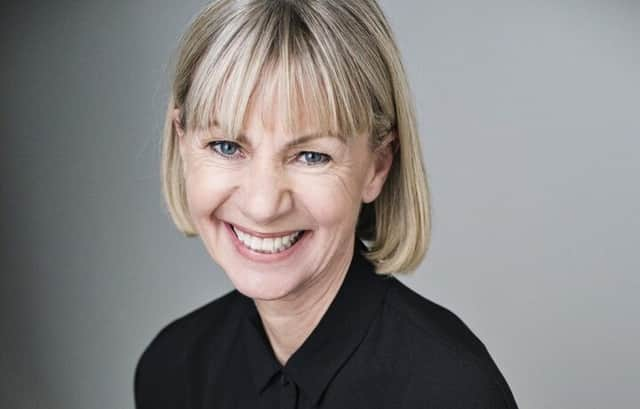Family history website reveals women are missing from their family trees
This article contains affiliate links. We may earn a small commission on items purchased through this article, but that does not affect our editorial judgement.


And there are 39 million fewer women than men found on trees across their database.
Historical website Findmypast analysed its extensive collection – including more than 850 million people represented in family trees – to reveal the extent of the ‘Herstory Gap’.
Advertisement
Hide AdAdvertisement
Hide AdThe new data is released in a bid to close the gap and encourage people to better understand the women in their family history, with the goal for the nation to reach an additional 5m more women in family trees by the end of 2024
However, Kate Mosse, CBE – award-winning author of historical fiction and non-fiction titles, and Founder-Director of the Women’s Prize for Fiction & the Women’s Prize for Non-Fiction – believes much of this gap is due to deeper perceptions of the value of women’s stories:
She said: “Much of the joy of researching and uncovering women's stories - both unknown and those who were celebrated in their day but have slipped from public view - is that these amazing histories are often simply sitting there patiently waiting for someone to take the time to explore them. You have to be a detective, following the clues.
“There are fantastic resources, not least of all historical newspapers, in which you can explore a wide variety of rich, intriguing and often colourful stories. Although things are changing, most societies still do not place the same value on women’s stories and achievements as they do on those of men.
Advertisement
Hide AdAdvertisement
Hide Ad“This stark data from Findmypast illustrates that, not only from a historical perspective in recording women’s lives but also from a modern-day perspective in our interest and understanding of our female ancestors’ stories.”
Writing women back into history
This Herstory Gap has been driven by two main factors. The tradition of taking a spouse’s surname at marriage means that it can be more challenging to trace women prior to this point through multiple generations, meaning many prioritise the male lineage instead.
As a result, many women are only listed as ‘unknown’, with no further information added about them.
The appearance of women in historical records is also a contributing factor. While major life events were generally recorded across the board, the greater significance placed on recording male- dominated areas of recreation or work means that it is simpler to uncover and tell their life stories.
Advertisement
Hide AdAdvertisement
Hide AdCollections of military records spanning the First and Second World Wars and beyond are where this is most stark, with 98 per cent of all names being male across more than 300 collections, which include around 94 million names.
Findmypast has launched a new Herstory Hub to provide advice on tracking down female ancestors – and signpost towards record sets with a more even gender balance.
There, the public will be able to play a role in writing women back into history by voting on a list of five stories from women uncovered in historical records, with the winner commemorated with special plaque in July. You can also share your own stories on social media under the hashtag #FindHerstory.
Kate Mosse added: “The Herstory campaign is a rallying call to redress the balance and to actively seek out and remember the stories of our female ancestors. I’m delighted to be part of this campaign to expand our understanding and celebrate some of the amazing women whose contributions have been previously overlooked or lost.”
Advertisement
Hide AdAdvertisement
Hide AdJen Baldwin, research specialist at Findmypast, said: "We are determined to take a significant step forward in bridging the Herstory Gap in 2024 and onwards, revealing lost stories of the women who shaped our past and inform who we are in the present.
“To accomplish this, we’re urging everyone to follow our simple steps to add more women to family trees and discover the amazing stories of their own female ancestors, helping to rewrite history to include the missing 39 million women."
Top three tips on researching female ancestors
Search for combinations of names across multiple sources
Make sure to search for multiple spellings, variations and combinations of names for women. Key routes in for names are via censuses – looking out for changes in surnames of who your ancestor lived with – and marriage records. But exploring land records can also reveal property ownership, including by widows, and might mention parents or birth names.
Get the scoop from newspapers
Historical newspapers are a phenomenal source of stories. From major historical news moments to heartwarming family notices, they contain details of the events great and small that affected people’s lives. You might be able to shed light on maiden names in marriage announcements, or uncover details of achievements lost to time, social events, scandals, crimes, or even photos of your female ancestors within their pages. With the largest collection of British & Irish newspapers available online on Findmypast, it just takes a simple search to see if your ancestors made the headlines.
Advertisement
Hide AdAdvertisement
Hide AdDon’t rule out ‘male-focused’ industries and institutions
Even unlikely sources, such as male-dominated military records, can give results. Record sets such as British Red Cross Society Volunteers are 81 per cent female. Plus, even if your ancestor didn’t serve in the armed forces herself, there might be records of pension files with her maiden name listed if a relation died in the war. All this demonstrates the importance of keeping an open mind when searching for female ancestors.